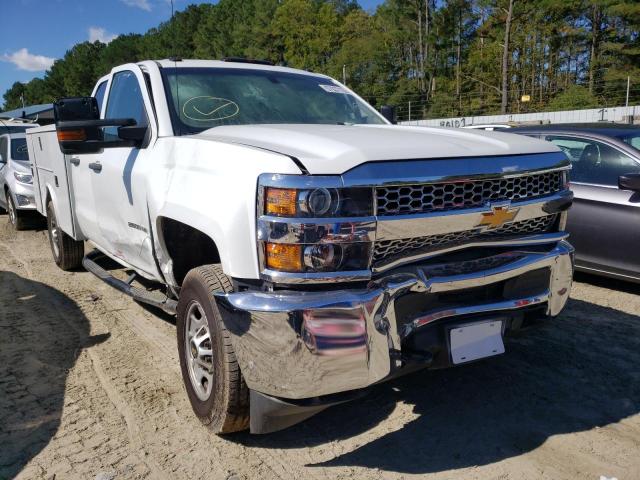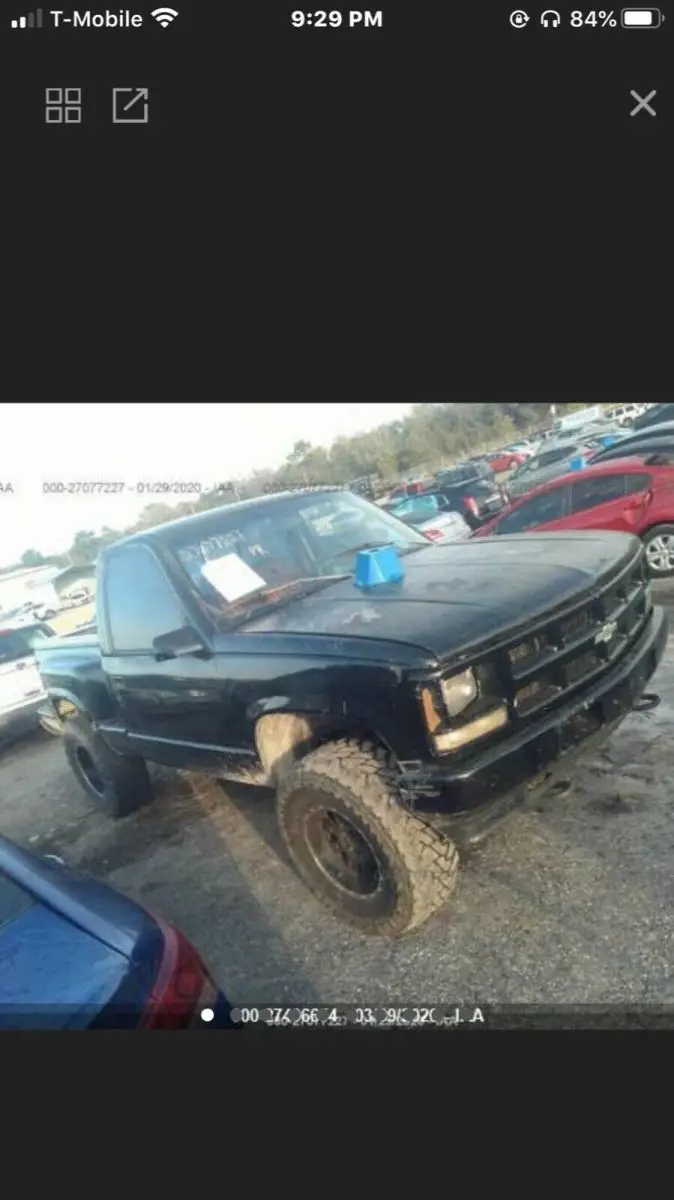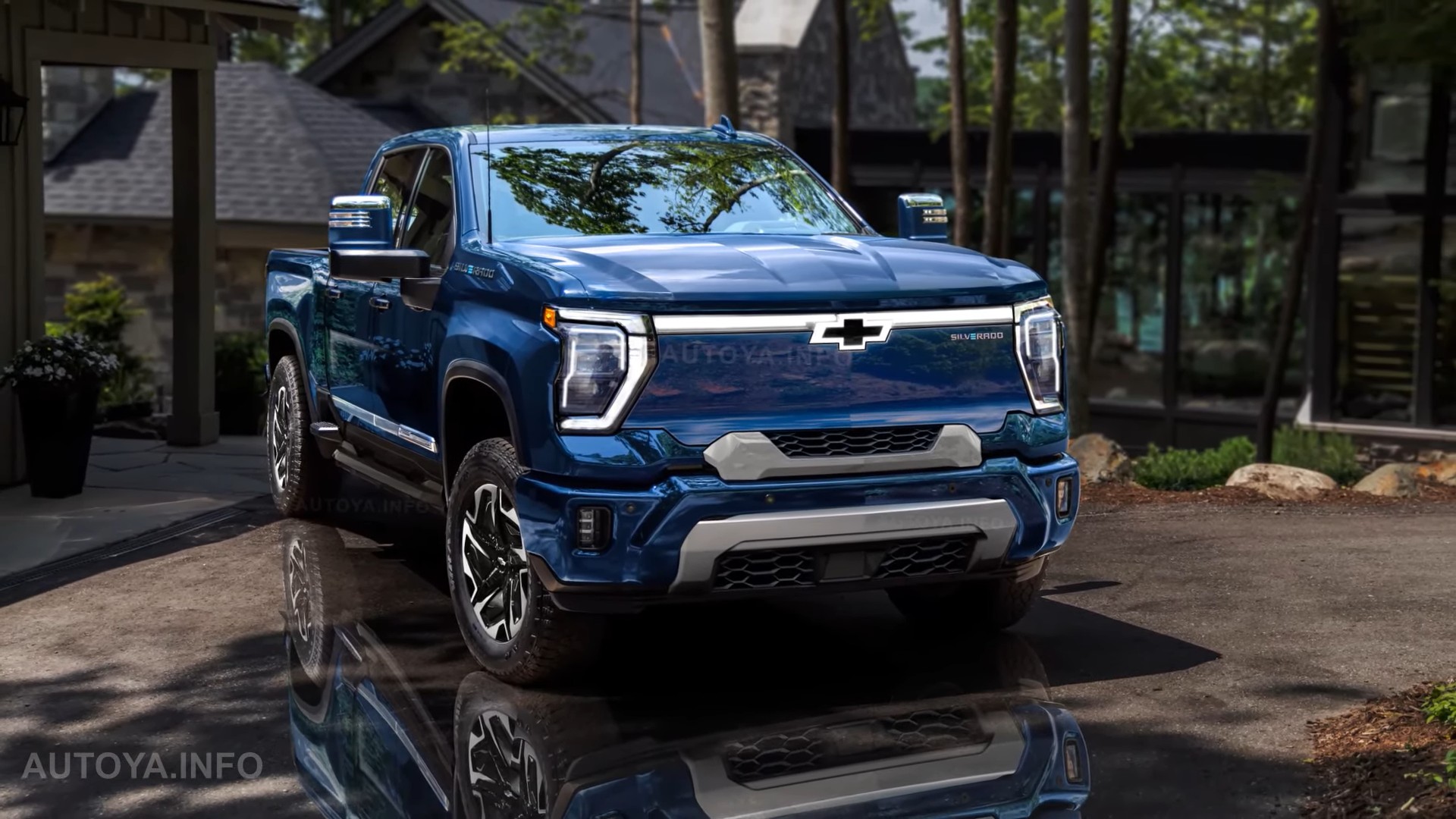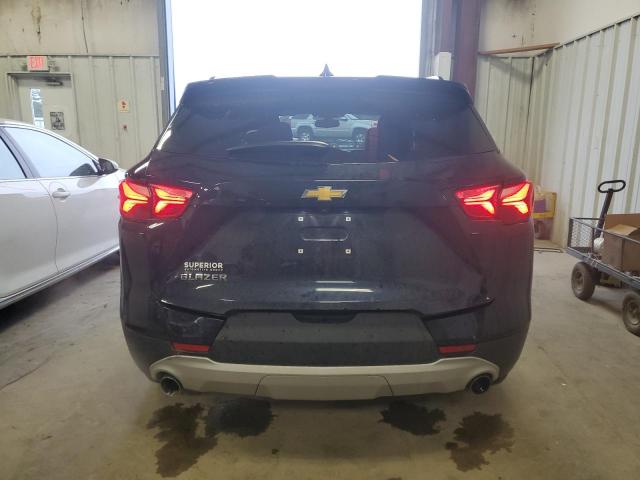Salvage Chevy 4×4 Trucks For Sale: A Comprehensive Buyer’s Guide pickup.truckstrend.com
The roar of a Chevy V8, the rugged capability of 4×4, and the unmistakable silhouette of an American workhorse – these are the hallmarks of a Chevrolet truck. For many, owning such a vehicle is a dream, but the price tag of a new or clean-title used model can often be a significant barrier. This is where the world of Salvage Chevy 4×4 Trucks For Sale enters the picture, offering an intriguing, often more affordable, pathway to truck ownership.
A "salvage title" indicates that a vehicle has been deemed a total loss by an insurance company due to significant damage (e.g., collision, flood, fire, theft recovery, vandalism, or hail). While this designation often carries a stigma, it also unlocks a unique market for savvy buyers, mechanics, and enthusiasts. For the intrepid individual willing to put in the research, effort, and sometimes, the wrench time, a salvage Chevy 4×4 can transform from a damaged vehicle into a powerful project truck, a reliable daily driver, or a valuable source of parts. This comprehensive guide will delve into every aspect of purchasing and restoring a salvage Chevy 4×4, helping you navigate this niche market with confidence.
Salvage Chevy 4×4 Trucks For Sale: A Comprehensive Buyer’s Guide
Understanding the Salvage More Than Just "Damaged"
Before diving into the opportunities, it’s crucial to grasp what a salvage title truly signifies. When an insurance company declares a vehicle a "total loss," it means the cost of repairs (or recovery in the case of theft) exceeds a certain percentage of its actual cash value (ACV). This percentage varies by state, typically ranging from 70% to 100%.
Common reasons for a salvage designation include:
- Collision Damage: The most frequent cause, ranging from minor fender-benders that escalate due to high repair costs to severe structural damage.
- Flood Damage: Vehicles submerged in water, which can lead to extensive electrical and mechanical issues, as well as rust.
- Fire Damage: Burns affecting wiring, interior, or engine components.
- Theft Recovery: Vehicles recovered after being stolen, often with missing parts, vandalism, or minor damage.
- Vandalism/Hail Damage: Cosmetic damage that is prohibitively expensive to repair through traditional methods.

It’s vital to distinguish between a "salvage title" and a "rebuilt title." A salvage title means the vehicle is not roadworthy and cannot be legally registered or insured for road use until it has been repaired and inspected. A rebuilt title, on the other hand, is issued after a salvage vehicle has been repaired, inspected by state authorities (to ensure it meets safety standards), and deemed roadworthy. Buying a vehicle with a rebuilt title can also offer savings, but the initial risk is lower as the restoration work is already complete and certified.
Why Consider a Salvage Chevy 4×4? Benefits & Opportunities
The primary allure of a salvage Chevy 4×4 lies in its potential for significant cost savings. However, the benefits extend far beyond just the initial purchase price:

- Substantial Cost Savings: Salvage vehicles are typically sold for a fraction (often 20-50% or even less) of what a comparable clean-title vehicle would cost. This can make an otherwise unaffordable truck accessible.
- Ideal for Project Builds: For off-roading enthusiasts, customizers, or those seeking a dedicated work truck, a salvage Chevy 4×4 is a blank canvas. You can focus your budget on performance upgrades, lift kits, heavy-duty components, or specialized equipment without worrying about "ruining" a pristine vehicle’s resale value.
- Source for Parts (Donor Vehicle): If you already own a Chevy 4×4, a salvage truck can be an invaluable source of spare parts, especially for hard-to-find components or an entire drivetrain. This can save you money on individual part purchases.
- Learning Experience: For aspiring mechanics or DIY enthusiasts, restoring a salvage truck offers an unparalleled hands-on learning opportunity, deepening your understanding of automotive systems.
- Potential for Profit: With the right skills and market knowledge, a well-executed restoration can potentially yield a profit upon resale, though this requires careful budgeting and expertise.

Navigating the Purchase: How to Buy a Salvage Chevy 4×4
Buying a salvage truck requires a strategic approach. It’s not like buying a used car from a dealership; due diligence is paramount.
-
Where to Look:
- Online Salvage Auctions: Websites like Copart, IAAI (Insurance Auto Auctions), and sometimes local government auctions are the primary marketplaces for salvage vehicles. They offer a vast inventory and detailed damage reports.
- Local Salvage Yards: Some local yards sell complete salvage vehicles directly, often providing a more personal inspection opportunity.
- Online Classifieds/Forums: Websites like Craigslist, Facebook Marketplace, and dedicated truck forums sometimes feature salvage titles for sale by individuals.
-
Researching the Vehicle’s History:
- VIN Check: Always run a comprehensive VIN (Vehicle Identification Number) check through services like CarFax or AutoCheck. While these reports may not always have full details for salvage vehicles, they can reveal previous accidents, title history, and odometer discrepancies.
- Auction Listings: Pay close attention to the auction listing’s description, photos, and any provided damage reports. Look for terms like "starts," "runs," "drives," and "rolls" to gauge the vehicle’s immediate operational status.
-
Inspection is Paramount: This is the most critical step.
- In-Person Inspection: If possible, physically inspect the vehicle or hire a trusted mechanic specializing in collision repair to do so.
- What to Look For:
- Frame Damage: This is the deal-breaker. Look for bends, kinks, or tears in the frame rails. Minor frame damage can sometimes be repaired, but severe damage often renders the truck unsafe or too costly to fix.
- Water Line (Flood Damage): Check for rust in unusual places, mildew smell, water lines on interior panels, muddy residue in crevices, or corrosion on electrical components.
- Engine/Transmission Issues: Look for fluid leaks, signs of overheating, or unusual noises if the vehicle runs.
- Suspension/Steering: Check for bent components, worn bushings, or misaligned wheels.
- Electrical System: Test lights, power windows, HVAC, and infotainment. Water damage can wreak havoc on electronics.
- Airbag Deployment: If airbags deployed, it signifies a significant impact. Ensure all necessary components (sensors, modules, airbags) are present or accounted for in repair plans.
-
Understanding Repair Costs and Effort: Get quotes for parts and labor if you’re not doing the work yourself. Factor in the cost of a paint job, potential hidden damage, and the state inspection for a rebuilt title.
-
Setting a Realistic Budget: Your budget should include:
- Purchase price of the salvage truck.
- Auction fees, buyer premiums, and transportation costs.
- Parts replacement and repair costs.
- Labor costs (if hiring a mechanic).
- Rebuilt title inspection fees.
- A contingency fund (at least 20-30% of estimated repair costs) for unforeseen issues.
Key Considerations Before Buying
- Damage Assessment: Be brutally honest about the type and extent of damage. A front-end collision might be simpler than structural frame damage or deep flood damage.
- Repair Feasibility: Do you have the skills, tools, and time to undertake the repairs yourself? If not, do you have a trusted, affordable mechanic who specializes in such repairs?
- Cost of Parts: Chevy trucks are generally good regarding parts availability, but specific 4×4 components (transfer cases, axles, differentials) can be costly if damaged. Research common failure points for the specific model year.
- Time Commitment: Restoring a salvage vehicle is not a weekend project. It can take weeks, months, or even years, depending on the damage and your available time.
- Rebuilt Title Process: Research your state’s specific requirements for obtaining a rebuilt title. This often involves a detailed inspection by state authorities, proof of repairs (receipts for parts, photos of the repair process), and verification of VINs.
- Insurance Challenges: Some insurance companies may be hesitant to insure a rebuilt title vehicle, or they might offer only liability coverage, not comprehensive or collision. Shop around and be transparent about the vehicle’s history.
- Resale Value: Even after a professional restoration and a rebuilt title, a vehicle’s resale value will typically be lower than a comparable clean-title vehicle. Buyers are often wary of rebuilt titles, so be realistic about future value.
Popular Chevy 4×4 Models to Look For
Chevy offers a wide range of 4×4 trucks suitable for salvage projects, known for their robust build and ample aftermarket support.
- Chevrolet Silverado 1500/2500/3500: The quintessential American full-size truck. Various generations (GMT800, GMT900, K2XX, T1XX) offer different levels of modern features and repair complexities. Parts are abundant, and their durable powertrains (especially the Vortec V8s and Duramax diesels) make them excellent candidates for restoration or heavy-duty project builds.
- Chevrolet Tahoe/Suburban: While SUVs, their body-on-frame construction and shared platforms with the Silverado make them essentially enclosed trucks. Older models (e.g., GMT400, GMT800) are popular for off-road builds due to their robust chassis and ample interior space.
- Chevrolet Colorado/GMC Canyon: Mid-size trucks that offer a more nimble option. Newer generations are more refined, while older models can be more budget-friendly for a salvage project. Good for those who don’t need a full-size truck but still want 4×4 capability.
- Chevrolet K5 Blazer/C/K Series (older generations): For classic truck enthusiasts, finding a salvage K5 Blazer or an older C/K series truck (especially from the 70s and 80s) can be a goldmine. While parts might be harder to source new, a vibrant aftermarket and restoration community exist, and their simpler mechanicals can make them more approachable for DIY repairs.
Tips for a Successful Salvage Chevy 4×4 Project
- Pre-Purchase Inspection (P.P.I.): Always, always, always get an independent mechanic (preferably one experienced with collision repair) to inspect the vehicle before you bid or buy. They can spot hidden damage that you might miss.
- Document Everything: Keep meticulous records of all repairs, parts purchased (with receipts), and photos of the damage before, during, and after the repair process. This documentation is crucial for the rebuilt title inspection and future resale.
- Don’t Cut Corners on Safety: While saving money is the goal, never compromise on safety-critical components like brakes, steering, suspension, frame repair, or airbag systems. Use OEM or high-quality aftermarket parts.
- Factor in Unforeseen Expenses: No matter how thorough your inspection, there will likely be unexpected issues. Build a healthy contingency into your budget.
- Join Online Communities: Truck forums, Facebook groups dedicated to Chevy truck restoration, or specific model years are invaluable resources for advice, troubleshooting, and finding parts.
Challenges and Solutions
- Challenge: Hidden Damage. The biggest risk is discovering more damage than initially assessed.
- Solution: Meticulous pre-purchase inspection, thorough VIN checks, and a strong contingency budget.
- Challenge: Unexpected Repair Costs. Parts or labor turn out to be more expensive than anticipated.
- Solution: Research part costs extensively before bidding, get multiple repair quotes, and maintain a robust contingency fund.
- Challenge: Difficulty Obtaining Rebuilt Title. State requirements can be complex and strict.
- Solution: Understand your state’s specific laws before buying, keep detailed records of all repairs, and ensure the vehicle is genuinely safe.
- Challenge: Insurance Issues. Some insurers are reluctant to cover rebuilt vehicles fully.
- Solution: Shop around, be transparent about the title, and be prepared for potentially higher premiums or limited coverage.
- Challenge: Lower Resale Value. Even perfectly repaired, a rebuilt title often fetches less.
- Solution: Be realistic about future value. If your primary goal is personal use or a project build, this might be less of a concern.
Salvage Chevy 4×4 Trucks For Sale: Estimated Price Ranges
It’s crucial to understand that prices for salvage vehicles fluctuate wildly based on model, year, extent and type of damage, location, auction fees, and current market demand. The table below provides very general estimated ranges for common Chevy 4×4 trucks in salvage condition. These figures are highly variable and serve only as a rough guide.
| Model & Generation | Year Range | Est. Salvage Price (Low Damage)* | Est. Salvage Price (Moderate Damage)* | Key Factors Affecting Price |
|---|
